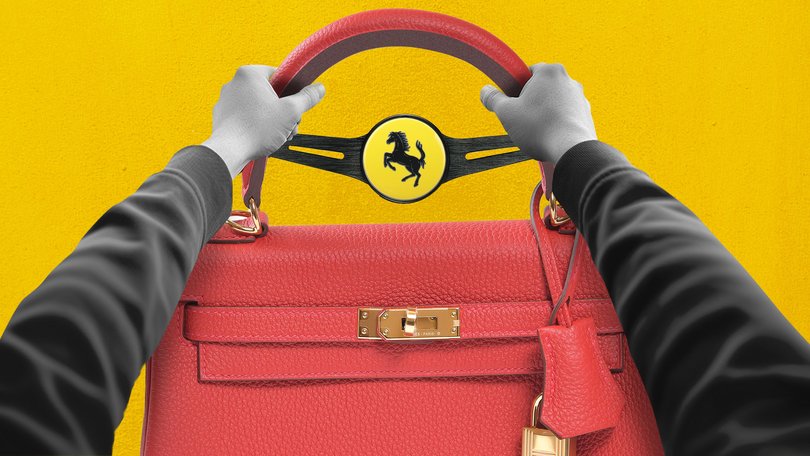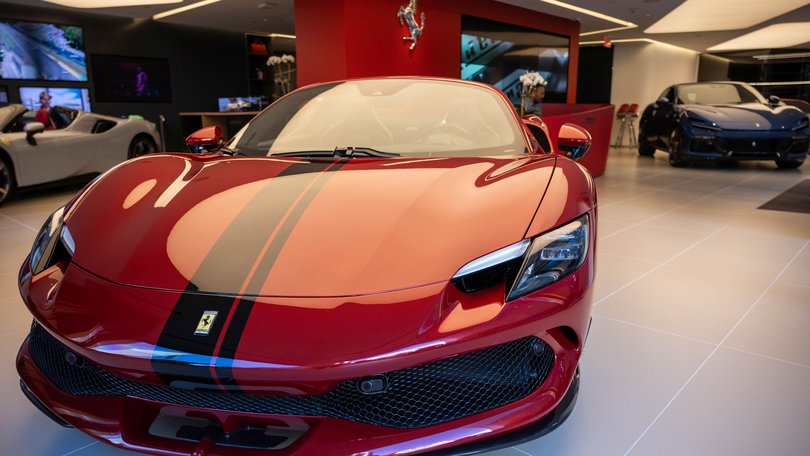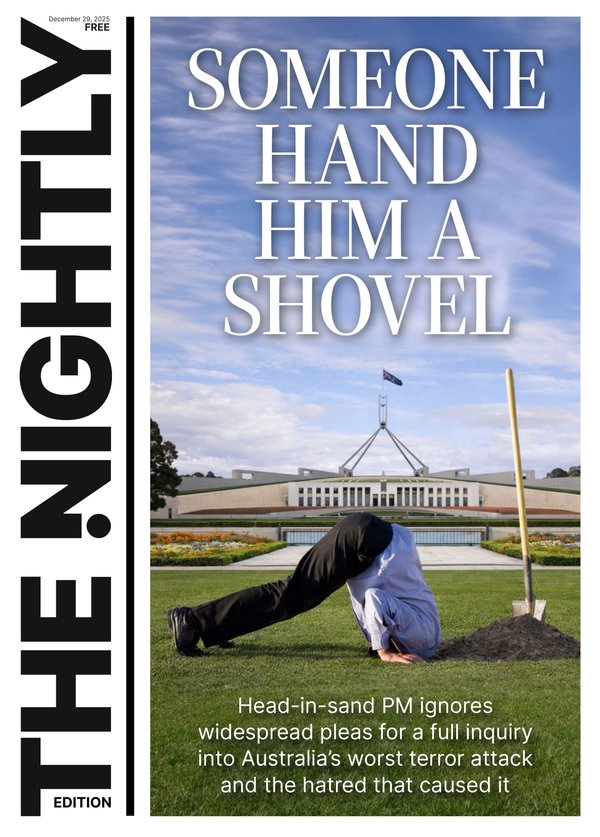THE ECONOMIST: The luxury brand strategy driving the success of Ferrari

The workaday town of Maranello, near such architectural jewels as Bologna and Modena, shares little of their charm. Nevertheless, its main attraction is a centrepiece of Italian culture.
A statue of a prancing horse on a roundabout reminds visitors that this is the home of Ferrari. Italian design, exclusivity and racing heritage have made the company both a champion of the car industry and something altogether different.
There are staggering dissimilarities between Ferrari and the dowdier end of the industry.
Sign up to The Nightly's newsletters.
Get the first look at the digital newspaper, curated daily stories and breaking headlines delivered to your inbox.
By continuing you agree to our Terms and Privacy Policy.Compare it with Stellantis, a mass-market carmaker created by the merger in 2021 of Fiat Chrysler, which sold Ferrari in 2016, and Groupe PSA, home of the Peugeot and Citroën brands.
Ferrari and Stellantis have in common Exor, the investment company of Fiat’s founding Agnelli family, which owns a stake in both firms (as well as The Economist’s parent company).
The commonalities stop there. Last year Stellantis sold 5.7m vehicles; Ferrari fewer than 14,000. Yet Ferrari’s market capitalisation, at €74 billion ($132b), dwarfs that of Stellantis, at €25b ($44.8b)
Among carmakers, only Tesla, Toyota and BYD are more valuable. Ferrari, which has an order book that is full for two years, had an operating-profit margin of 28 per cent last year, compared with low single digits for most big mass-market carmakers.
The company has grown impressively since it was unshackled from Fiat Chrysler.

Last year it sold almost twice as many cars as in 2015, and generated more than twice as much revenue. Its market value is around nine times higher than when it went public.
Much of Ferrari’s recent success is down to the stewardship of Benedetto Vigna, its ebullient boss, appointed in 2021. In a break from tradition in an industry where insiders usually get the top job, he previously ran part of STMicroelectronics, a chipmaker.
Mr Vigna’s background as a theoretical physicist is apparent as he illustrates his ideas with diagrams sketched on pieces of paper like a professor at a blackboard. His contention is that Ferrari is not only a luxury-goods company, but is in many ways a superior one, even compared with France’s Hermès, the most valuable firm in that industry.
The maker of high-end sports cars has succeeded in boosting sales while adhering to the maxim of Enzo Ferrari, who founded the firm in 1947, that it should sell “one less car than the market demands”.
Despite its expansion, Ferrari insists that it is as exclusive as ever, having grown fastest in places such as the Middle East where sales were once small.
In recent years it has also raised prices at a far faster pace than in the past. As Stephen Reitman of Bernstein, a broker, points out, the price of new models used to be 3 to 5 per cent higher than those they superseded, whereas the new 12Cilindri is a whopping 30 per cent more than the 812 Superfast it replaces.
That is also true for Ferrari’s hugely profitable flagship cars, which arrive at irregular intervals, justified by improved technology learnt from racing.
Deliveries of the latest, the F80, which costs €3.6m ($6.5m) will begin soon, 12 years after the launch of the LaFerrari, which set owners back a mere €1m or so. Total revenue from the F80 will exceed €2.3b, says Jefferies, a bank.
To plug the gap between launches of these moneyspinners, Ferrari has started to make special limited-edition cars, such as the Daytona SP3 unveiled in 2021 (price: €2m), which are high-margin styling exercises underpinned by existing models.
Ferrari also now offers far more opportunities for personalisation, from custom paint-jobs to added carbon fibre and lavish interiors.
These can add 20 per cent to the price of its cars, which Barclays, a bank, reckons will set back buyers an average of more than €500,000 next year.
The firm is able to charge such eye-watering prices thanks to the devotion of its loyal fans. Some 80 per cent of customers are already owners.
Many make a pilgrimage to the factory; some, overcome by emotion, are said to shed a tear.
Judging the mood of its customers by keeping in close contact with around 180 dealerships worldwide allows Ferrari to draw its most avid collectors into an inner circle.
Tariff-induced price rises have made no difference to orders from America.
Sales of the F80 (of which Ferrari is making just 799) were three times oversubscribed.
Getting chosen for one required buying several other Ferraris and acting as an ambassador, including turning up at car shows organised by the firm (and paying for the privilege).
Even that was not a guarantee. Customers accept that Ferrari cannot serve everyone, says Enrico Galliera, its marketing chief, dubbed “Mr No” for frequently rejecting requests from would-be buyers.
They may fear any sign of disgruntlement will mean being bumped down future waiting lists.

All this sounds similar to how ultra-luxe fashion brands such as Hermès operate. Yet Mr Vigna reckons Ferrari has even more going for it than the maker of pricey leather goods.
His firm combines heritage with cutting-edge technology. It takes part in adrenaline-pumping events like the British Grand Prix on July 6.
“Hermès don’t go racing,” says Mr Vigna (though it does organise the Saut Hermès, a show-jumping tournament). Chinese consumers, who have lately tightened their purse strings, account for just 8 per cent of Ferrari’s sales, compared with as much as two-fifths at Hermès. And Ferrari relies almost exclusively on the very rich, who are more insulated from downturns.
A good chunk of revenue at Hermès comes from cheaper goods such as scarves, ties and perfume, much of which are sold to consumers who are rich, but not outrageously so.
What could go wrong for the car industry’s ritzy star? Some say that its price rises are already too aggressive.
Further increases in production may eventually threaten the brand’s perceived exclusivity. Revenue from personalisation has its limits.
Ferrari also has one thing in common with more mundane car firms: the transition to battery power. The Elettrica, its first foray into that segment, will hit the road next year.
The company recently doubled the size of its factory in Maranello, which will give it flexibility to make the electric vehicle without producing fewer of its current models.
Yet other electric supercars have been met with indifference. If Ferrari’s fails to impress, the carmaker’s pristine image could be damaged.
Worryingly, on June 17 reports emerged that it will delay a second electric model by two years, to 2028. Mr Vigna may still have to solve his trickiest problem yet.
Originally published as Ferrari is looking less like a carmaker and more like Hermès
